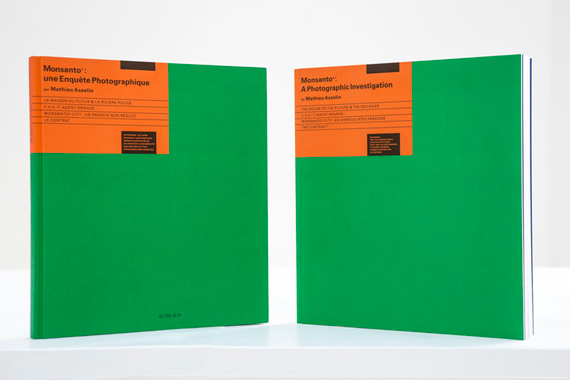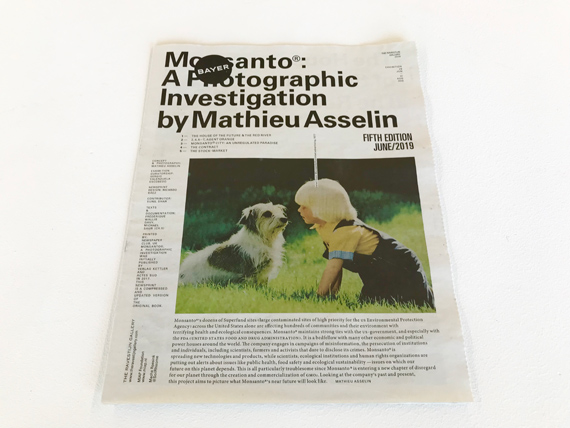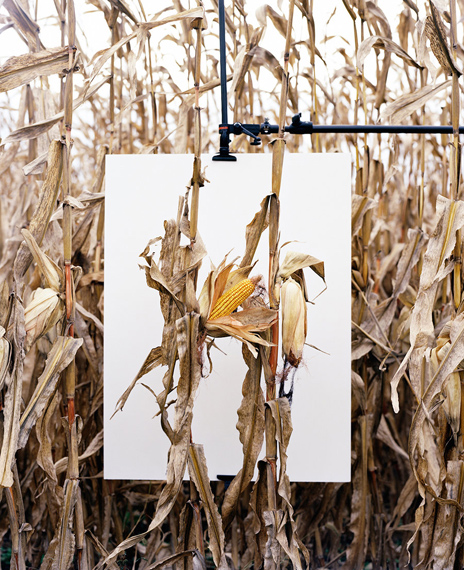
In 1996, Monsanto® introduced its first GMO seeds. It ensured that farmers could not save the seeds and essentially lost the ownership of their seeds. Consequently, the power balance shifted away from the farmers to corporations who now own about 80 percent of GM corn and 93 percent of the GM soy market. Now farmers not only have to buy the seeds from the corporations year after year, but they are also forced to comply with the rules and regulations embedded in the contracts, which are designed to put the farmers at a juridical disadvantage.
Mathieu Asselin »
Monsanto®: A Photographic Investigation
Exhibition: 29 Jun – 31 Aug 2019
Fri 28 Jun 17:00

THE RAVESTIJN GALLERY
Oudelandsdijkje 9
1141 PH Monnickendam
+31 (0)20-
info@theravestijngallery.com
www.theravestijngallery.com
by appt.
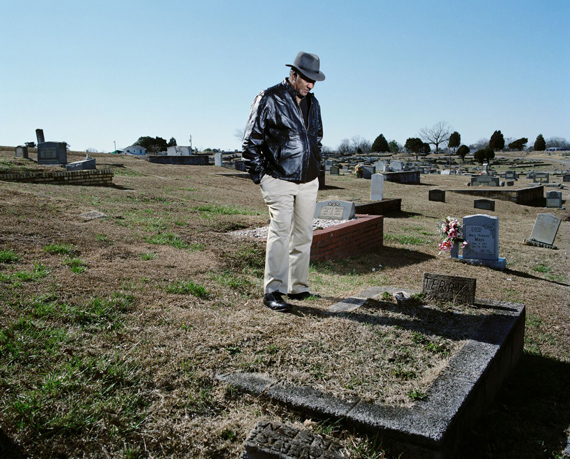
David Baker (65) at his brother Terry's grave. Terry Baker died at the age of 16 from a brain tumor and lung cancer, caused by PBC exposure. The average level of PBC in Anniston is twenty-seven times higher than the national average.
Monsanto®: A Photographic Investigation by Mathieu Asselin Opening Friday, June 28, 2019 from 17:00 to 19:00 Exhibition 29 June to 31 August 2019
28 June 2019 Talk: Mathieu Asselin & Sergio Valenzuela Escobedo at The Ravestijn Gallery
Monsanto: A Photographic Investigation opening night talk.
The Ravestijn Gallery is delighted to present Monsanto®: A Photographic Investigation by Mathieu Asselin in collaboration with guest curator Sergio Valenzuela Escobedo.
This summer, The Ravestijn Gallery will host the exhibition Monsanto®: A Photographic Investigation in collaboration with guest curator Sergio Valenzuela Escobedo. The exhibition shows Asselin’s exhaustive project about the origins, methods and consequences of the destructive pesticides manufactured and used by the American chemical company Monsanto, in both a current and historical context. In 2018, Monsanto was acquired by the German chemical company Bayer, driving increased financial interests in the company whilst the toxic consequences continue to be coerced on vast areas of environment, thousands of farmers, animals and countless others.
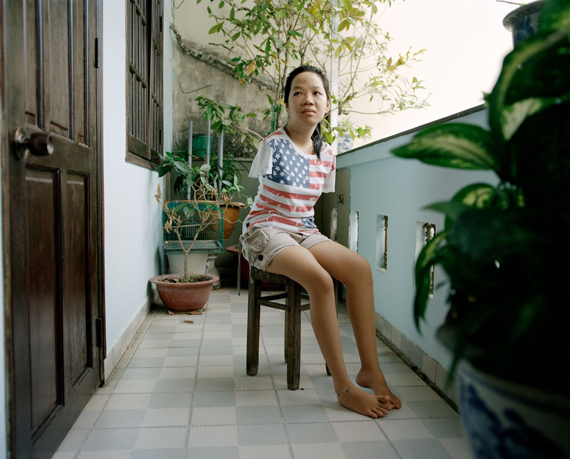
Thuy` Linh, 21 years old. Third generation Agent Orange victim genetic malformation, born without arms. Thuy` Linh finished high school 2 years ago. She applied to many universities to study but most of them didn't accept her because of her missing arms. Her mother finally found a school willing to admit her. She finished her course in design a few months ago. Currently, she is looking for a suitable job. She went to Tû Dû Obstetrics Hospital when she was 3 years old and stayed until she was 18.
In an interview with Sunil Shah for American Suburb X, Asselin outlined his condemning of Monsanto’s products and propaganda, “I think the work becomes much more interesting when you aren’t trying to camouflage your point of view, these are not the right times for ambiguity, even in photography.” The series has received profound recognition in the photographic community and far beyond. Artist, writer and curator Lewis Bush summarises the importance of Asselin’s project saying “Asselin’s photographs become a sort of testament to what happens when the well-being of the future is traded for profit in the present, and specifically the consequences for those people who have to occupy that future, who are inevitable often the poor and marginalised, the last people in other words who might own stocks in a company like Monsanto. ”
Asselin’s work has been published in Foam, Liberation, Paris Match, Huck Magazine, the New Yorker Photo Booth and GEO Freitag. The Monsanto®: A Photographic Investigation project has been shown at, amongst others, the photography festival Les Rencontre d’Arles in France, Fotofestival Breda and Fotomuseum Antwerpen FOMU. Asselin obtained his MA in Photography at the ENSP École Nationale Supérieure de la Photography d’Arles in France. He lives and works in Arles and Caracas.
The publication of Monsanto®: A Photographic Investigation will be available to view in the gallery during the exhibition. Whilst the English 1st edition is sold out, the French version will be for sale. The book is published by Verlag Kettler / Actes Sud (2017), and designed by Ricardo Báez. The book was nominated for the Deutsche Börse Photography Foundation Prize 2018 and was the Winner of First Photobook of the Paris Photo-Aperture Foundation Photobook Awards 2017.
A special newspaper edition of Monsanto®: A Photographic Investigation will be printed with support from the MIAP Foundation (Message In A Photo Foundation). Over the course of the exhibition, there will be a programme of events held at The Ravestjn Gallery for farmers, biologists, students, policymakers and other interested parties about the effects of Monsanto’s pesticides, compiled by historian and curator, Macha Roesink in collaboration with Mathieu Asselin and Sergio Valenzuela Escobedo.
Monsanto®: A Photographic Investigation is the first in a series of exhibitions initiated by The Ravestijn Gallery in which the gallery offers the space to established and emerging artists during the summer to facilitate conversations around social issues. The project can only be purchased by non-profit institutions that endorse the conditions of photographer Mathieu Asselin and curator Sergio Valenzuela Escobedo.
For more information about the project please visit: www.mathieuasselin.com�
